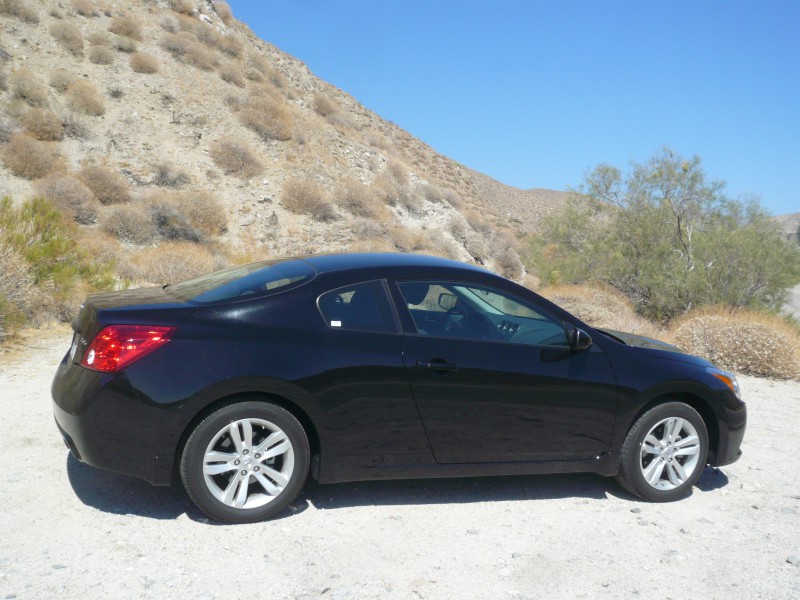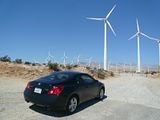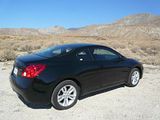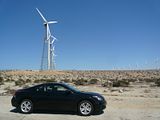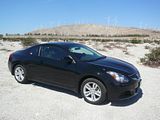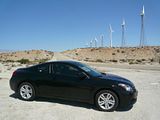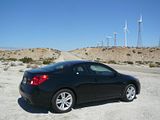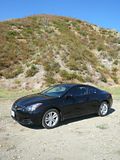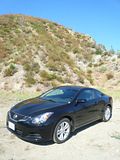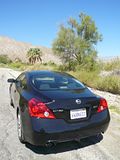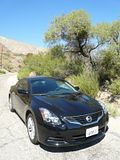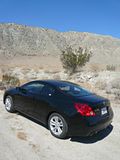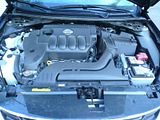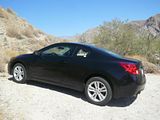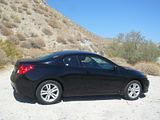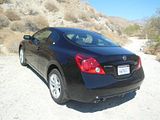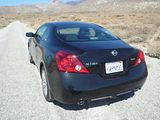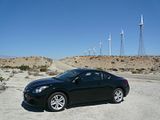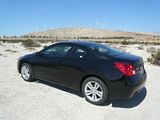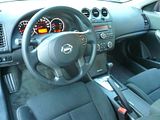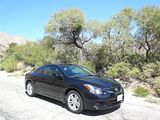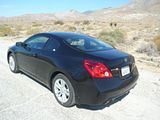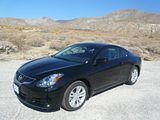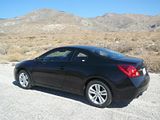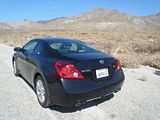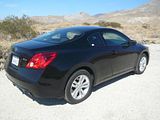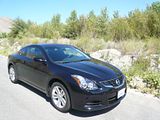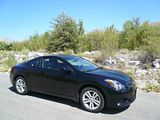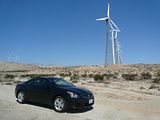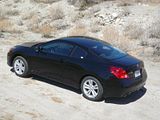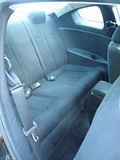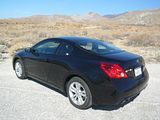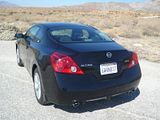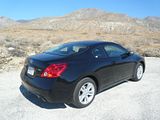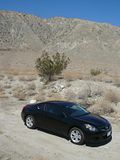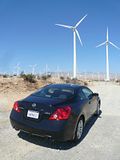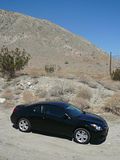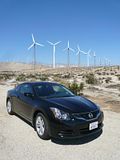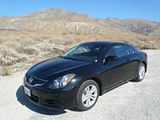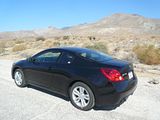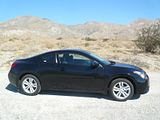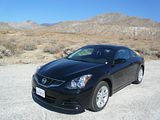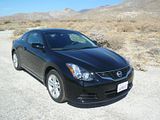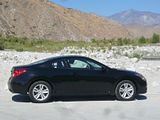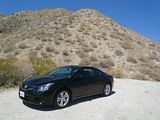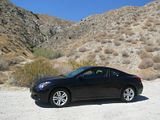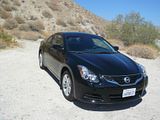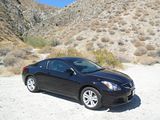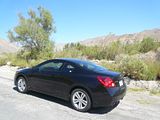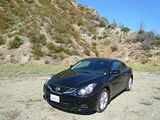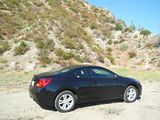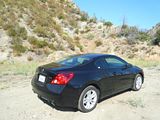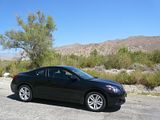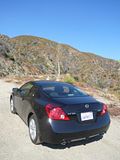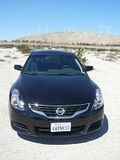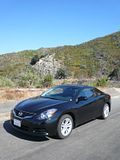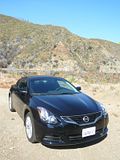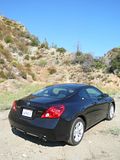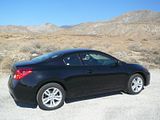
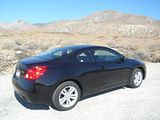
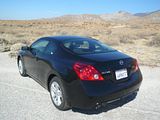
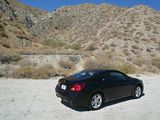
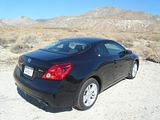
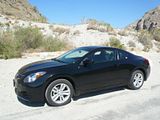
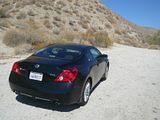
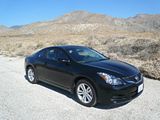
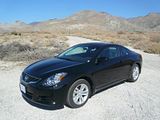
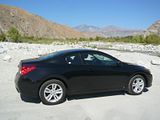
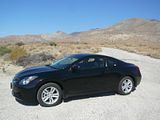
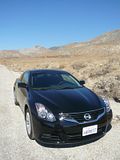
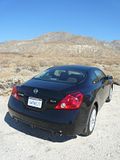

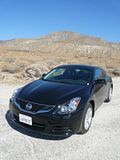
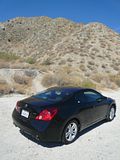
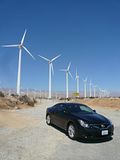
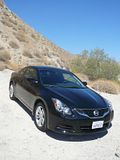
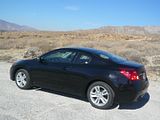
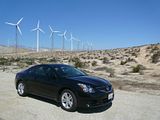

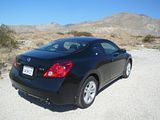
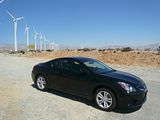

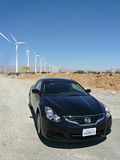
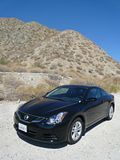
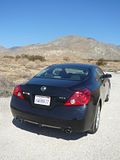
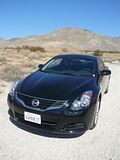
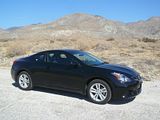
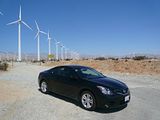

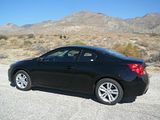
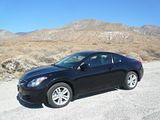
Just as with the 4 door models, this generation of Altima is offered with a choice of a 2.5 litre 4 cylinder or 3.5 litre V6 engine. The test car had the former, and it was coupled to the optional automatic transmission. As with most US market Nissan, this means a continuously variable gearbox rather than one with defined ratios. The 4 cylinder motor puts out 175bhp, which is pretty much on a par with similarly sized rivals, and it endows the Altima with respectable levels of performance, though nothing that will get the owner unduly excited. It is smooth and refined, though, and the power arrives in quite a linear fashion, so no matter where you are starting from, if you put your foot down, speed increases. Some of the credit for this may be attributable to the CVT transmission which is definitely one of the better of its genre, avoiding the usual problems of a delay between what your right foot does and the gearbox sorting out the right ratio. These transmissions can be quite jerky especially when applying the brakes, but this one was not. The gearlever has a straight movement back from “park” to “drive” and can then be pulled over to the left where there is the option to flick the lever back to force lower gearing, but having played with this a couple of times, I left well alone after that. Fuel economy was impressive. I averaged a commendable 30.88 mpg (US), which amounts to 36.9 mpg Imperial in a test distance of 315 miles. Granted that a lot of it was at a steady speed on the freeways of Southern California, but even so, that is a good result. When I filled the car up, the fuel gauge was reading exactly half, having consumed 10.2 gallons so that also means that the range from the 20 gallon tank is particularly good. The rest of the dynamics were pretty much as I remembered from the 4 door saloon test from earlier in the year. Unlike rivals Toyota, who seem to think that steering should be weightless and feel-less, that in the Altima is well judged, with both good weighting and feel, so the driver really can sense what the front wheels are doing. No sophisticated electronics are needed on a car of this potency to handle the power going to the front wheels, and the Altima proves to have exactly the sort of safe forgiving handling that the journalists uses to crave before they all decided that the ability to powerslide and get the tail out is what we all need and want. There is not much body roll, so the car proved decently adept at handling the swopping bends on the Angeles Crest Highway which formed part of the test mileage. That road was resurfaced following the complete rebuild after the massive wildfires and subsequent mudslides a couple of years ago, so it is smooth, but many of the other roads in Southern California are anything but, so the suspension’s ability to cope with a mixture of everything from ridged concrete to potholes the size of a Smart car is something which is easy to test. The Altima did well, coping with all but the very worst with barely any trouble. Noise levels are pleasingly low, with no dominant source from any of engine, tyres or wind, so cruising on the freeway was a peaceful and relaxing experience. When I first got into the Nissan and adjusted the mirrors, I feared that visibility might be a challenge, as the rear window is very raked, the side windows are small, and you sit quite low in the car. Although I could not see either the front or back of the Altima, it was not difficult to manoeuvre, though, with good sized door mirrors definitely helping matters.
Compared with the 4 door model, Nissan may have changed the external styling of the Altima, but open the door and look at the cabin and what greets you is a dashboard that is identical to that in the saloon. This is not necessarily a Bad Thing, as it is the model of clarity and ease of use. The interior of the test car was black, and that really did mean that everything was black, with just a bit of very dark grey trim in places. The seats and door casings are finished in a sort of felt/velour type material which I quite like, and which had sufficient texture and stippling to lift the cabin from looking completely funereal. The dash itself is moulded from a decent quality plastic. A cowl covers the three dials, which comprise speedo, rev counter and one for water temperature and fuel level. All are clearly marked and easy to read. The centre of the dash is dominated by the three round air vents part of the circumference of which extend up beyond the otherwise straight dash top. Below this is the AM/FM audio unit, which proved very easy to use and with a good quality signal and sound. Beneath this are two rotary dials flanking a switch comprised of four quadrants for airflow direction comprise the air conditioning set up. Irritatingly, every time I restarted the engine, the system seemed to default back to directing air at my feet, though it may well be possible to change this had I had a handbook to consult. Chunky column stalks so indicators, wipers and lights. The only buttons on the steering wheel boss are for the cruise control, there being no audio unit repeaters. As with the saloon, the tinted shadeband on the screen extends down quite a bit further than in most cars, though I did not find it as much of an annoyance as I did with the four door car. One feature I did like was the keyless starting. There is a large button to the right of the wheel, and as long as the key is in proximity – there is a place to put it to the lower left of the dash, if you really want – then the car will fire. This was a real boon when hopping in and out doing photos. Press the button once, and you get the accessories such as radio to work without the engine running, too.
The front seats in the Altima Coupe proved very comfortable, with just the right support in the seat design itself. You do sit noticeably lower in this car than in the saloon, especially since, as with almost all my test cars, I put the seat to its lowest position. The backrest rake is adjusted through a series of defined steps, as seems to be the US market preference, but again it was easy to get the right angle.
Clambering into the back of the Altima is far from easy. Only the backrest tilts forward, and even by helping matters and moving the front seat as far forward as I could – which is quite awkward from outside the car as the bar under the seat is not easily accessible from this angle – the resulting space through which you have to clamber is very narrow. Annoyingly, the seat backrest does not return to its original position, either. There is a release on the inside of the passenger’s seat, but none on the driver’s side, so getting out is not that easy, either. Once installed, legroom is not exactly generous, thanks no doubt to the fact that the Coupe model has a shorter wheelbase than the saloon, and headroom is also a problem, as the roofline and rear window slope quite steeply and I found my head on the rear window. There is a trade-off to be made in the boot, too, which is notably smaller than in the saloon model. It is a good regular shape, but with rather less height thanks to the sloping rear end design of the car. There is a well under the boot floor for the spare wheel, but there is precious little space around it for anything else. The rear seat backrests can be folded forwards to add more length to the cargo area. Inside the cabin, oddment space is available in the door bins, a decent glove box, a huge and deep cubby at the bottom of the dash behind the gearlever, and at two levels, one of them deep, under the central armrest. There are two cupholders under a lid on the centre console.
Trim levels for the Altima Coupe mirror those of the saloon, with the exception that there is no base model. That means that the S trim of my test car was the cheapest way into Altima Coupe motoring. Above it are the SR models. Equipment levels are broadly the same on Coupe and Saloon, though the S model Coupe does have 17″ alloys as standard, as well as the keyless entry and starting system, for its $24,640 price including the optional CVT transmission. Otherwise, all the basics are there, but not a lot more. As well as the 3.5 litre engine, SR trim includes a leather wrapped wheel, 8-way electric adjustment for the seats with lumbar support, climate control, a rear boot spoiler, 18″ alloys, a sun roof, an upgraded audio unit and automatic lights. Go for the manual gearbox, and you get a top spec SR model, which adds automated climate control, heated leather seats, a rear camera, a further upgrade to the audio unit including satellite radio and a compass. You will be asked to pay $31,700 for the top spec car.
There was much to like, and nothing of any consequence to dislike about the Altima Coupe. In that respect, it is just like the saloon, about which I recorded a similar conclusion. I started this report wondering if the Coupe model would bring any excitement to the Altima, and the answer, at least in 2.5 S guise is “no”, but then of all those Capris that Ford sold in the 1970s, although everyone wanted a 3000 GT XLR, the majority were 1300 and 1600 models, so this really is the modern day equivalent of the “car you always promised yourself”. It has that bit more style than the regular 4 door saloon, and the price premium of just under $2000 is not prohibitive. Is that enough? For many, in the 21st century, probably not, and so this car will not sell in vast numbers. However, it does not cost the likes of Nissan much to offer the different body style for those who can accept the reduced accommodation, so I welcome its existence as yet more variety in an already well-endowed new car market. As a cheap rental car prospect – Hertz rate it as a Group D, one class lower than the saloon – if you can fit everything for your trip into the car, then it is a pretty decent set of wheels for your trip.

